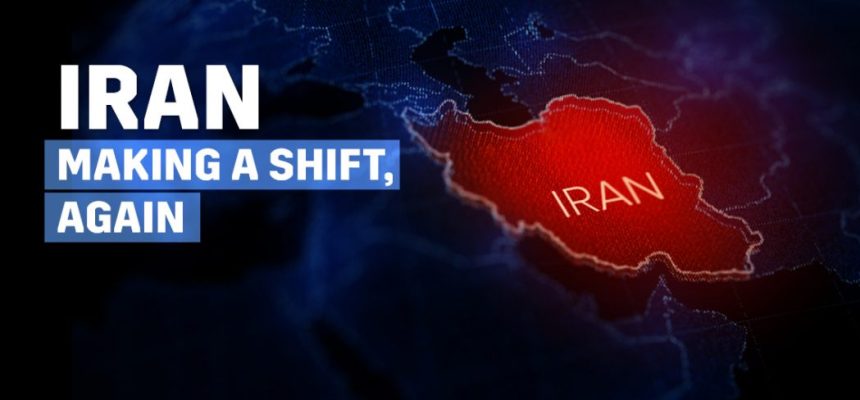Tehran, Shiraz, Zahedan, Kurdistan, and other Iranian cities are on fire. Police officers are frequently seen fleeing the streets and, in some cases, being severely beaten by the young protestors. The death of MahasaAmini, a 22-year-old Kurdish woman, in Tehran’s capital city after she was imprisoned by the “Morality Police,” or Irshad, has effectively incensed the average Iranian, particularly the younger generation, against what they refer to as an “inefficient Nezam.” The public outrage was unabated despite the clarifying footage that was broadcast on state TV and showed the girl falling at the police station. Young groups, generally without a ring leader, can be seen running amok and viciously attacking any police informant or the police themselves just before dusk or in the afternoon hours.
The biggest puzzle that any spectator has is why a country that has a generally artistic sense of how to express even its displeasure is turning to violent acts to get its voice heard. In reality, the Iranian flag has been set on fire in several towns. The flags of the current supreme commander and the late founder of the Islamic state have been taken down and torched in a few towns. One such video shows the destruction and burning of QasemSoleimani posters in his birthplace of Kerman. The veracity of the film could not be independently verified.
One may attribute this resentment to years of punishment. The current state of affairs is the result of years of poor management, a failure to equally divide the advantages, and the emergence of a privileged class of “revolutionaries” who enjoy all the conveniences while ordinary Iranians struggle to make ends meet.
The name “Aghazadeh,” which is used to describe the sons and daughters of powerful leaders in modern-day Iran, is viewed less as a badge of honour and more as an insult. Because people want to see the art form and because the serial “Aghazadeh” has made a good amount of money in terms of advertising revenues earned by the state TV, an otherwise morally correct state TV like IRIB has aired multiple seasons of the series. The serial centres around influential people engaging in profiteering, murder, and passion (portrayed within the censor’s limits).
Also Read: Biden’s visit to the Middle East: The Echo of Iranian Nuclear Deal
Iranians have indeed done well in many areas of life. Iran is becoming a banked society, with more Iranians using debit cards, using electronic payments, and taking advantage of subsidy programmes run by banks. By producing locomotives domestically, its engineering sector has been able to assist the nation in saving foreign currency. When compared to the PAF or the Indian Air Force, the Iranian aircraft manufacturing industry has been able to maintain a large portion of its US-built inventory, which includes F-14 Tomcats, F-4 Phantoms, and C-130 Hercules aircraft, with little difficulty and with few crashes. Similarly, its creative industry has also done successfully because of its films’ box office success at international film festivals. It has entered into collaborative ventures for the production of films and television shows on civil wars or ancient mystics with Turkish and Russian colleagues. Even now, a combined Iranian-Turkish production titled Mast Ishq, which is about MaulanaRoomi is just about ready for global distribution.
Any layperson would advocate what is known as a “regime transition” in light of the state’s handling of the economy and the inability of the system to address concerns, in addition to the growing gap between the ruler and the ruled for a variety of reasons. The gulf is invisible to those who live in rural areas. The reality has been too harsh for the middle class in metropolitan areas, though.
Iran’s recent interactions with the rest of the world demonstrate that its attempts to communicate with the capitalist world have frequently failed. The JCPOA was unable to withstand the Republican takeover of the USA when Democrats lost power. Iran has more readily discovered points of agreement with China and Russia. Anyone in the US and Saudi bloc has found ties with Iran to be unsettling, with the most prominent illustration being the shift from the “brotherly countries of Iran and Pakistan” to the “sceptical guys” who are constantly watching them!
In such a setting, discussion of a regime transition in Iran is typically met with mistrust, as though the West is once again planning an Iranian coup d’état a la 1953. In actuality, Iranian society is about to undergo a regime change—not the one that the West would desire but the one that is necessary for the country’s society and polity. We might argue that Iran needs a change of guard or its priorities, just like Pakistan, whose political, social, and economic model requires a change of priority, the combat line-up, and sovereign control of policies.
Iran, which was formerly dominated by the Safavi family, which gave that nation its official religion of Shia Islam, has travelled a long way to reach the position that is now recognised. The years from 1700 to 1900 were quite similar to the rest of the Muslim world. Decadence inside the made room for imperialist intrusion into these states’ daily affairs. Iran saw its fair share of man-made famines, including the one that struck it at the beginning of 1900. With the development of modern polity, the Pahlavis introduced the country to the industrial revolution. The modern state, on the other hand, has suppressed free expression and attempted to impose its ideology on a struggling nation. Small incidences in 1977 finally provided the necessary spark for the powder keg of unhappiness to blow out.
In January 1978, unrest was sparked by an offensive article against Ayatollah Khomeini in the official newspaper Itlaat. The Pahlavi regime virtually ended on December 10; the official end date was February 11, 1979.
Practically speaking, the new regime opened the door for the average Iranian to get to the top via their hard work. Soleimani, a farmer’s kid who would have ended up in a menial position in his birthplace under the Pahlavis, rose to the top and for a while rattled the geopolitics of the area.
However, the gap between the ruler and the ruled was also growing at the same time as these success stories. The fairly conservative interpretations of the constitution and religion did not promote decentralisation; instead, they contributed to an impasse, an increase in inefficiency, and the emergence of a privileged elite known as Aghazadeh.
As things stand, Iranians may be unwilling to accept minor concessions. Direct communication between important figures and the average person seems to be vital to resolve issues legally. That scenario looks like a remote possibility when considering the Middle Eastern mentality.
The suggestion that the Hijab controversy should not be resolved with bayonets by a prominent grand ayatollah in Qom who is not a member of the government may be a step in the right direction. Despite these more sensible voices, the Iranian government and society are prepared for yet another shift. The fact that royal actions may not do much to defuse the issue needs to be considered in this situation. Iranians must fairly determine what they want.
It will be crucial to watch how the West responds to calls for intervention and how much they choose to defer to Iran. Iran must be allowed alone to choose the best course for its people. The desired outcomes from the crisis may include reform in the constitution, altering the boundaries of the state, decentralisation, and a constitutional weakening of the “rule of clerics.” Any use of force has the potential to bring about a shift that would astound both Iranians and observers across the world. Time will tell if the regime change will come from inside or from an external assault during the next few weeks as the JCPOA comes to an end.






